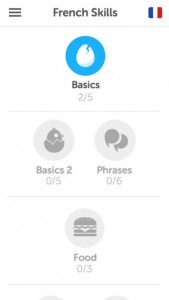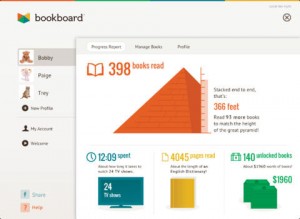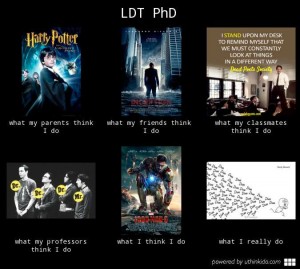This week’s reading provides me a direct understanding of the technological integration of mobile devices into the learning experiences. The affordance of mobile devices, e.g., computing power, connectivity, and mobility, extends the range of learning environment, facilitates the social construction for collective knowledge, and enhances the learning in authentic contexts. However, the issues of adoption, availability, assessment, and etc. still challenge its future in the realm of learning.
Hsu and Ching’s (2012) paper investigates the practice of integrating mobile microblogging in an online course to promote learning in authentic contexts. Microblogging, as blogging, enables users for personal publication and interactive communication but it has a lower maximum of words. Participants in this study are required to have a smartphone or mobile device for this course and a university grant will provide support for those who did not have one to ensure they can meet the technological requirement. Participants post at least one tweet each week about the design topic and also comment on others’ posts, which lasts for nine weeks. Those tweets are used as the major source for the data analysis and the result indicates that microblogging can “promote learning in authentic contexts”, “reinforce formal learning with informal learning”, and also “enhance social learning”. Even though the character limit, microblogging increases the deep conversation through short but frequent exchanges. However, several challenges are also recognized such as the availability of mobile devices, the restriction of hashtag, and etc. The issue of availability reengaged me into the through of “digital equity” and further extend my understanding on the equity. Microblogging and other mobile learning strategies highly rely on mobile devices which causes learning goals cannot be achieved without the basic equipment. Additionally, not all the users are interested in the upgrading of the device, which will also bring about the decrease of the learning outcome.
Martin, Pastore, and Snider (2012) examine the instructional practice of incorporating mobile web applications in the learning process. The goal is to enable participants to create a systematic mobile instructional system with Dreamweaver. Participants are initially required to upload a 10-minute instructional movie clip of the subject matter that they want to focus on. Then the instructor show participants the basic techniques on how to use Dreamweaver to create instructional materials and provide scaffolding for participants to move on. With those scaffolding, participants work on their websites individually and then present to the class for feedback in order to complete the collective construction. At the end of the research, participants are expected to reflect their design practice and three challenges concerning the design issues are highlighted from their responses, e.g., small size of screen, usability (simplified navigation and organization), and the design of contents (concerning the size of screen and downloading speed). Based on the research project, researchers proposed several suggestions on the design of instructional practice with mobile device. The first is about the mobile development and delivery methods and researchers discussed the choice between mobile apps and mobile websites in perspectives of accessibility, development, and functionality. The second addresses the product testing which concerns whether the free online space is available for users to test their design. Finally, researchers indicate that it is essential for users to test their products outside the school/classroom. They argued that for the mobile websites, similar emulation program cannot satisfy the current need and more precise emulation programs are in need.
In summary, the instructional practice of integrating mobile devices helps students combine formal learning with informal learning, which promotes learning in authentic contexts, enhances social learning, and intensifies the metacognition.
My research interests address K-12 learning as well as adult learning. In addition to those two examples, I will share two examples of incorporating mobile devices into learning practice. The first one is used in the language learning (see attachment). The success of language learning is limited by the time that students engage in language learning activities outside the classroom and the absence of opportunities and motivation in practical contexts (Liu, Tan, and Chu, 2010). Therefore, researchers expect to construct a context-aware immersive learning context supported by Augmented Reality (AR) technologies to facilitate language learning. AR is an excellent educational application in terms of its ability to embed digital objects into a real environment (Hughes, Stapleton, Hughes, & Smith, 2005). Liu, et al. (2010) proposed a QR code and AR-supported English learning environment, called Handheld English Language Learning Organization (HELLO). HELLO system relied on the HELLO server and m-Tools and allowed students to acquire context-aware resources with their mobile phones and WLAN. With the detected identification code sent from students’ mobile phone when they took pictures to decrypt QR code, the server located students and sent the context-aware contents back to their phones. HELLO system turned out to be rather feasible and promising in Taiwan after a pilot study. For example, if an instructor of English Learning Center (ELC) made a QR code of English reading materials and sent it to the server, students could finish their reading tasks even when they were waiting in lines for their food in the cafeteria.
The second one is about K-12 children’s reading but it is still in the phase of proposal. Motivation is considered as one integral component of children’s academic success including reading activity. However, research indicates that children’s reading motivation decreases with the increase of their ages, which fuels the phenomenon, “fourth grade slump”. In order to increase children’s reading motivation, the development team founds the subscription service called Bookboard and also creates its mobile app compatible with iPad. Bookboard incorporates game mechanics, parental involvement, and metacognition, which are supposed to increase children’s self-efficacy, stimulate intrinsic motivation, and help them define prosocial goals. Since the app is located on iPad, children can complete reading activity anytime and/or anywhere. Above all, this app demonstrates great potential to be incorporated in the instructional practices.
Reference:
Bookboard, INC (2013) Bookboard.com.
Hsu, Y. C., & Ching, Y. H. (2012). Mobile microblogging: Using Twitter and mobile devices in an online course to promote learning in authentic contexts. The International Review of Research in Open and Distance Learning, 13 (4), 211-227.
Hughes, C. E., Stapleton, C. B., Hughes, D. E., & Smith, E. M. (2005). Mixed reality in education, entertainment, and training. Computer Graphics and Applications, IEEE, 25(6), 24-30.
Liu, T. Y., Tan, T. H., & Chu, Y. L. (2010). QR code and augmented reality-supported mobile English learning system. In Mobile Multimedia Processing(pp. 37-52). Springer Berlin Heidelberg.
Martin, F., Pastore, R., & Snider, J. (2012). Developing mobile based instruction. TechTrends, 56 (5), 46-51.
QR Code and Augmented Reality-Supported Mobile English Learning System













